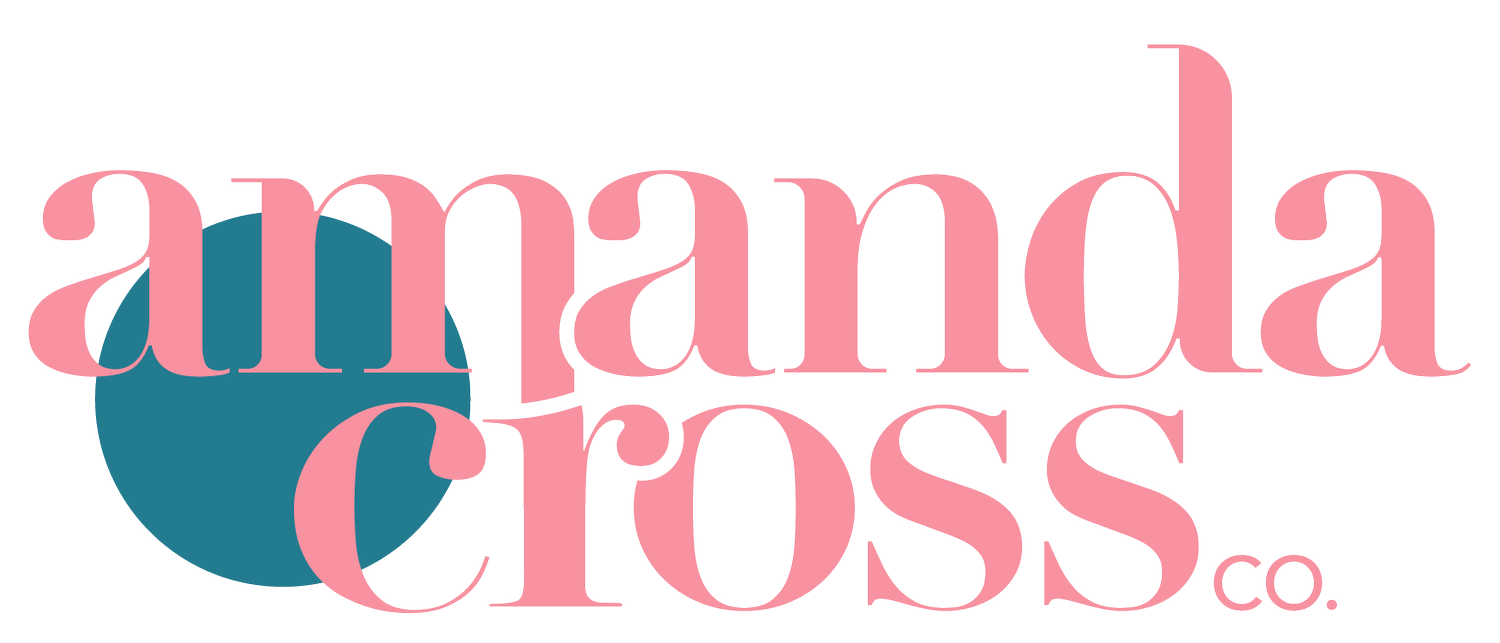How To Plan One Year Of Content For Your Business Blog
Starting a business blog can be such an exhilarating experience. You are excited to put pen to paper and get your blog written and released to the universe. The problem with this? You could quickly run into a roadblock if you are not careful. Today's post will teach you how to plan one year of content for your business blog. I want your blog to be insightful and helpful to your audience no matter your brand. So, stick around as we delve deeper into today's topic.
1. Understand Your Audience
The first step you should take to plan one year of content for your business blog is understanding your audience. You cannot create content for an audience if you don't know the audience well.
Here are some helpful ways to understand your audience.
If You Are New: Play To Who You Want Your Audience To Be
You may not currently have an audience, and that's okay. Think about who you want your ideal audience to be. Answer some questions about them:
Age
Location
Gender
Hobbies
Hangout Spots
Concerns/Issues
Dig as deep as you can with that. Ultimately you attract what you put out there, so if you play to this persona that you build, you will get more of those people in your audience over time, if you invest in the promotion of the content you produce.
If You Have An Audience: Get To Know Them
If you already have an audience, get to know them better:
Send out a survey
Create a Facebook group to hang out with them
Schedule one-on-one calls with them
If you already have many people who love your brand, it's up to you to reach out and start the process of connecting with them. You can use the information you gather from these interviews to understand your audience and begin thinking about post ideas.
2. Pick A Posting Schedule
Next, to plan one year of content, you must know how much material to create.
For most blogs, I would suggest 1-3 posts a week, BUT for a business blog, I would recommend one post a week. Why? Well, you have stuff to do and a business to run! You may want to release a bunch at the beginning to build an archive, and then from there only release one a week.
So, this means that you need to produce around 52 pieces of content each year: about 4-5 articles a month.
3. Create A Spreadsheet
Now that you know you need to plan 52 pieces of content, I would encourage you to start a spreadsheet for your planning process. This doesn't have to be an intense process.
Tabs You Need In Your Spreadsheet:
Brain Dump: This is where you can dump all your blog post topic ideas. Don't worry about organizing them just yet, just get them out there!
Calendar: The next tab should be devoted to a more calendar-style look with 4-5 empty slots under each month.
Month Breakdowns: You should also have a tab for each month. You can use these tabs to get more involved in the planning process. You may also want to plan more than just blog content, so monthly tabs will make it easier for you to prepare other content like emails, live streams, ebooks, etc.
I love to use an excellent spreadsheet to plan content. If you want to take this to the next level, do the spreadsheet in Google Drive. If you do this in Google Drive, you can easily share your spreadsheet with other team members so they can add and edit it as they please. You can also take Google Drive documents on the go across many devices like your laptop, phone, or tablet which is very helpful if inspiration strikes outside of work hours.
4. Plan Monthly Themes (If You Can)
A monthly theme will allow you to create content that interconnects (which is fantastic for SEO) and it will also let you delve deeper into subjects you are discussing on your blogs.
I go into more depth about creating blog post series in a post I am linking as related reading for this section. In that post, I take a deep dive into planning monthly content, and I share how you can create complex monthly themes that make your readers think about the content you are creating. If you are interested in that, I encourage you to check out the post.
Related Reading: How To Plan A Blog Post Series That’s Informative And Helpful For Your Business
Monthly themes will make you think deeper about the content you create. It will also keep your readers coming back for more if they have fallen in love with the theme you are covering that month. Themes are a great way to turn browsers into fans quickly.
5. Start With Evergreen Content
The basis of your business content should be evergreen content. Why? Well, that's the kind of content that will get you noticed year round. Evergreen content will bring visitors to your blog no matter the time of year, and it will help the most people over time.
You don't want to focus too much on gimmicky content, because those visitors are less likely to become fans of your work.
Focus on sharing quality content that will help people year round and content that is in-depth and 1000+ words per post.
Related Reading: What is Evergreen Content? A Guide to Long-Lasting Content That Boosts SEO by Wordstream
When you are thinking of evergreen content, don't think of the following:
Content that's time-based: News, for example, wouldn't be evergreen because the most critical news changes all the time
Blogs that are stats heavy: Statistics frequently change as people collect more up to date information. If you can include research to back up your posts, that's awesome and not what I'm chatting about here. I am talking about stats roundup posts like "10 Stats You Didn't Know About The Credit Card Industry," those stats will change over time, and your post will become irrelevant.
Content that includes products: Websites get new products and old products become obsolete. You would always have to keep these updated to make them even appear evergreen.
Evergreen content should create a steady stream of traffic for your blog. It likely won't give you large upticks of traffic like holiday content will, but it will sustain you throughout the year when holiday traffic is nowhere to be found.
6. Move On To Holidays, Special Events, & Promotions
Holiday content can bring a TON of visitors to your site, but the problem with holiday content is that it comes in waves.
So, if you want to take advantage of holiday content, you may want to lay out each month and produce a piece that will do well in that month.
For example, if you were a beauty company looking to capitalize on the present and future holiday traffic here is what your holiday calendar may look like:
January: 5 Tips For Dealing With Dry Winter Skin
February: Woo Your Significant Other With These Sultry Valentine's Day Beauty Looks
March: How To Spring Clean Your Makeup Bag
April: Rain Proof Makeup Ideas That Will Help You Look Beautiful In The Rain
May: How To Transition Your Makeup And Skincare Routine From Spring Into Summer
June: The 3 Items You Need To Add To Your Makeup Bag That Won't Sweat Off This Summer
July: 3 Amazing Lipsticks You Need To Celebrate National Lipstick Day
August: 4 Quick Beauty Looks To Master For Back To School
September: 5 Pieces That Will Make You Look Like The Queen Of Fall Makeup
October: Here Are 6 Halloween Makeup Ideas That Anyone Will Love
November: 7 Tips That Will Help You Look Flawless On Thanksgiving Day Without The Hassle
December: 8 Extravagant Beauty Looks For Your Upcoming Christmas Party
Once you have a good number of holiday pieces spread out, those pieces will continue to bring in traffic and grow your brand for years to come.
When it comes to holiday or special event traffic, try not to focus on adding years to the content. When you create content that is year specific, it dates your content and makes it hard for it to be taken seriously down the road. Instead, focus on holidays that happen year after year instead.
7. Then Consider Frequently Asked Questions
Next, when creating your content calendar, think about the frequently asked questions you get about running your business. You will save SO much time when you can point to a blog post that answers all your audience's questions instead of typing everything out time after time.
You can answer FAQs in a variety of ways:
In a roundup-style article where you knock out multiple frequently asked questions.
In a standalone blog post where you tackle one issue at a time.
There is no right way to do it, although it'll be easier to keep up with which questions you answered if everyone is given a single blog post. On the other hand, roundup posts are often hard to accomplish if you are only getting a couple of questions at a time.
You want to create content that is helpful and answers your audience questions, though, because once you answer their questions, they will have fewer qualms with ordering from or investing in you.
8. Take A Peek At Past Competitor Content
Next, you may want to look at the type of content that your competitors have done that did wonders for their blog. To do this, use the tool BuzzSumo, it's a paid tool, but you can use the free version to get a certain number of searches per day. You cannot use all the elements of the tool on the free version, but you can see enough to take a peek at your competitor's most shared content in the last year.
Let's take my other blog The Happy Arkansan for example.
From looking at my blog, I might assume that I want to see the following topics if I were another millennial lifestyle/college blog:
Self-Care
Graduate School
Saving Money
Creativity
Introversion
Getting Involved In Class
Greek Life
Now, it doesn't mean I would cover those topics, but these are just thought starters for me. I would consider this information, think about what I have experience with, and then find ways to make these topics my own or decide to move forward with other topics in my editorial calendar.
9. Make Sure You Mix Up Content Types
Last, but not least, make sure you are mixing up your content. How to posts get boring if you are releasing them every single week. Throw in some Q&A posts, a case study, a listicle, or some product reviews every blue moon. Do what you can to make sure that your audience never gets bored reading your content, and you never get bored writing it.
Earlier this year, in March, I went further in-depth on different content types you can use on your blog. You can read that post below.
Related Reading: Use These 16 Content Ideas To Get High-Quality Traffic To Your Site In 2018 (And Beyond)
Conclusion: You Can Plan One Year Of Content
I know you may be scratching your head wondering how you will plan one year of content for your business blog, but it can be done. It may take a lot of upfront planning, but once you have it done, you will thank yourself later.




